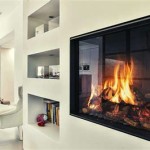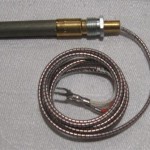The Enduring Appeal of Fireplace With Bookcase Combinations
A fireplace paired with a bookcase is a design element that evokes a sense of warmth, sophistication, and intellectual curiosity. This combination, frequently seen in libraries, studies, and living rooms, transcends mere functionality, offering a focal point that enhances both the aesthetic and practical aspects of a space. The integration of these two elements requires careful consideration of style, materials, and spatial dynamics to achieve a harmonious and effective result. This article explores the nuances of fireplace and bookcase combinations, delving into their benefits, design considerations, and practical applications.
The historical prevalence of this design choice stems from a time when fireplaces served as primary heating sources, and books were valuable and carefully curated possessions. Placing bookshelves near the fireplace was a logical way to centralize learning and comfort, creating a nucleus for family activity and intellectual pursuits. Today, while alternative heating solutions are readily available, the symbolic appeal of this combination remains strong, representing a haven of relaxation and knowledge.
Enhancing Ambiance and Functionality
One of the primary advantages of integrating a fireplace with a bookcase is the enhanced ambiance it provides. The flickering flames and crackling sounds of a fire create a cozy and inviting atmosphere, perfect for relaxation and conversation. The presence of bookshelves filled with literature, art, or personal collections adds depth and character to the room. Together, these elements cultivate a sense of warmth and intellectual stimulation, making the space more appealing and versatile.
From a functional standpoint, the combination optimizes space utilization. In rooms with limited square footage, integrating bookshelves around a fireplace eliminates the need for separate furniture pieces, thereby streamlining the layout. This can be particularly beneficial in smaller homes or apartments where efficient space management is crucial. The bookshelves provide storage for books, decorative items, or even media components, contributing to a clutter-free and organized environment.
Furthermore, the fireplace and bookcase combination can serve as a natural divider in open-concept living spaces. By creating a visual barrier, the structure can define different zones within a larger room, such as separating a living area from a dining space or study. This division helps to create a sense of intimacy and privacy in what might otherwise be a vast and undefined area.
The specific type of fireplace can also contribute to the overall functionality. For example, a gas fireplace offers convenience and ease of use, while a wood-burning fireplace provides a more traditional and authentic experience. The choice depends on individual preferences and the specific needs of the space.
Design Considerations for Integration
Successfully integrating a fireplace with a bookcase requires careful planning and attention to detail. Several key design considerations must be addressed to ensure a cohesive and aesthetically pleasing result. These factors include the overall style of the room, the materials used, the dimensions of the fireplace and bookshelves, and the placement of the elements within the space.
The architectural style of the room should dictate the design of the fireplace and bookcase combination. In traditional settings, ornate mantels, detailed carvings, and classic bookshelf designs are appropriate. In contrast, modern and contemporary spaces benefit from minimalist designs, clean lines, and the use of materials such as steel, glass, and concrete. A seamless integration of these elements is critical to maintaining a cohesive and harmonious aesthetic.
The choice of materials is another important consideration. Brick, stone, and wood are common materials for fireplace surrounds and mantels, while wood, metal, and glass are frequently used for bookshelves. The selection should be based on the desired aesthetic, the existing décor, and the overall budget. It is essential to consider the fire-resistant properties of materials used near the fireplace to ensure safety and compliance with building codes.
The dimensions of the fireplace and bookshelves should be proportional to the size of the room. A large, imposing fireplace can overwhelm a small space, while a diminutive fireplace may be lost in a large room. Similarly, the height and width of the bookshelves should be carefully considered to ensure they are visually balanced with the fireplace and the surrounding architecture.
Proper placement of the fireplace and bookcase is also crucial. The fireplace should be positioned in a location that maximizes its visual impact and its ability to heat the room. The bookshelves should be arranged in a way that complements the fireplace and creates a sense of symmetry and balance. The accessibility of the bookshelves should also be taken into account, ensuring that they are easily reachable and do not obstruct the flow of traffic within the room.
Material Choices and Their Impact
The materials employed in the construction of a fireplace and bookcase combination significantly influence the aesthetic and functional properties of the unit. Various materials offer distinct advantages in terms of durability, thermal properties, and visual appeal. Careful consideration of these factors is essential to achieving the desired outcome.
Wood remains a popular choice for both fireplace mantels and bookshelf construction due to its versatility and warmth. Different types of wood, such as oak, maple, and cherry, offer varying grain patterns and colors, allowing for customization to suit different design preferences. Wood can be easily stained or painted to match existing décor, and it provides a relatively lightweight and structurally sound material for bookshelf construction. However, wood is susceptible to heat damage, so precautions must be taken to protect it from direct exposure to the fireplace.
Stone and brick are frequently used for fireplace surrounds due to their fire-resistant properties and natural aesthetic appeal. Stone can range from rough-hewn fieldstone to smooth, polished marble, each offering a unique visual texture. Brick provides a more traditional and rustic look and is also highly durable and resistant to heat. These materials can add significant weight to the structure, so proper structural support is essential.
Metal, particularly steel and wrought iron, is increasingly used in modern fireplace and bookcase designs. Metal offers a sleek and contemporary aesthetic and can be used for both fireplace surrounds and bookshelf frames. Steel is strong and durable, making it suitable for supporting heavy loads, while wrought iron provides a more decorative and ornate option. Metal is also fire-resistant and can be easily shaped and customized to create unique designs.
Glass is often incorporated into bookshelf designs to add visual interest and create a sense of openness. Glass shelves or cabinet doors can display books and decorative items without obstructing the view. Tempered glass is a common choice due to its strength and resistance to breakage. Glass can also be used for fireplace screens to protect from sparks and embers.
The combination of different materials can create visually stunning and functionally effective fireplace and bookcase designs. For example, a stone fireplace surround paired with wooden bookshelves can create a balanced and inviting atmosphere, while a metal fireplace with glass shelves can offer a sleek and modern aesthetic.
Practical Considerations for Installation and Maintenance
The installation of a fireplace and bookcase combination requires careful planning and execution to ensure safety, functionality, and aesthetic appeal. Several practical considerations must be addressed during the installation process, including structural support, ventilation, and compliance with building codes.
Structural support is a primary concern, especially when installing a heavy stone or brick fireplace. The floor and walls must be able to support the weight of the structure to prevent settling or collapse. A qualified structural engineer should be consulted to assess the load-bearing capacity of the building and recommend appropriate reinforcement measures if necessary.
Proper ventilation is essential for fireplaces, especially wood-burning models. A chimney or flue is required to vent smoke and combustion gases safely out of the building. The chimney should be properly sized and installed according to building codes to ensure adequate draft and prevent backdrafting. Regular inspection and cleaning of the chimney are necessary to prevent creosote buildup, which can pose a fire hazard.
Compliance with building codes is mandatory for all fireplace installations. Building codes specify requirements for fire safety, structural integrity, and ventilation. Permits may be required for the installation of a fireplace, and inspections may be conducted to ensure compliance with code requirements. It is essential to consult with local building officials to determine the specific requirements for the installation.
Maintenance of a fireplace and bookcase combination is also essential to ensure its longevity and functionality. Regular cleaning and inspection are necessary to prevent damage and maintain its aesthetic appeal. The fireplace should be cleaned regularly to remove ash and debris, and the chimney should be inspected annually for creosote buildup. Bookshelves should be dusted regularly to prevent the accumulation of dust and allergens.
The proximity of books to a heat source requires special consideration. Books should be placed at a safe distance from the fireplace to prevent damage from heat and smoke. The bookshelves should be constructed of fire-resistant materials, and a fire extinguisher should be readily accessible in case of emergency.
The integration of a fireplace with a bookcase represents a blend of aesthetic and functional design. By carefully considering the style, materials, and practical considerations, it is possible to create a space that is both visually appealing and functionally efficient.

Best Built In Bookshelves Around A Fireplace Design Ideas Living Room Renovation Decor Shelves

White Built In Bookshelves Around The Fireplace Green With Decor

ᑕ❶ᑐ Fireplace Bookshelves Design Has Shiplap Set Sail

Reader Question How Can I Build Symmetrical Bookcases Around This Fireplace Addicted 2 Decorating

Fireplace Bookshelves Design Ideas

53 Captivating Built In Bookcase Ideas 2024 Fireplace Ins Shelves Living Room Bookshelves

Contemporary Fireplace Cabinets And Bookcases In Chicago Illinois Wheatland Custom Cabinetry Woodwork

Bookcase Built Ins With Fireplace Insert Featuring Remodelando La Casa Ana White

Fireplace Bookshelves Design Ideas

Thrifty And Chic Diy Projects Home Decor
Related Posts








